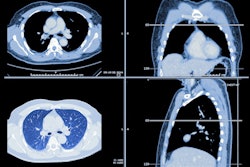
Using low-dose CT (LDCT) to screen for lung cancer in current and formerly heavy smokers offers more benefit than harm, according to the German Institute for Quality and Efficiency in Health Care (IQWiG). The final report commissioned by the Federal Joint Committee (G-BA) found LDCT can save a number of people from dying of lung cancer and, for some, prolong overall survival.
Lung cancer is usually discovered at a late stage so often only one-fifth to one-sixth of people affected are still alive within five years. Germany doesn't currently offer systematic screening for lung cancer, but LDCT could fill the void. The IQWiG investigated this possibility by analyzing eight randomized controlled trials with more than 90,000 people. The results show within about 10 years, LDCT can prevent about five out of every 1,000 people from dying of lung cancer.
However, LDCT doesn't show a statistical advantage for all-cause mortality -- perhaps because people saved from lung cancer death die from other tobacco-related diseases instead.
When it comes to a population-based screening program, two questions always come to mind: What is the misdiagnosis as well as overdiagnosis rate? The IQWiG found variable rates: one to 15 out of every 1,000 people underwent unnecessary surgery due to false-positive screening results. Similarly, the overdiagnosis risk varied: Out of every 1,000 people invited to screen, zero to 22 might be affected by overdiagnosis. The risk of overdiagnosis for people diagnosed with lung cancer during the screening phase ranged between 0% and 63%.
Given everything the institute found, the IQWiG concluded that there is a hint of a benefit in using LDCT for lung cancer screening, particularly for current and formerly heavy smokers versus no screening. However, screening should be supported by specific quality assurance measures such as diagnostic algorithm, types of devices, follow-up, etc. Additionally, more information will come to light in the next few years that could turn the tide for LDCT. Up to the end of 2024, a European study is investigating the safety of risk-based examination intervals and strategies for implementation: The "4-In The Lung Run" includes a total of 24,000 people.



















